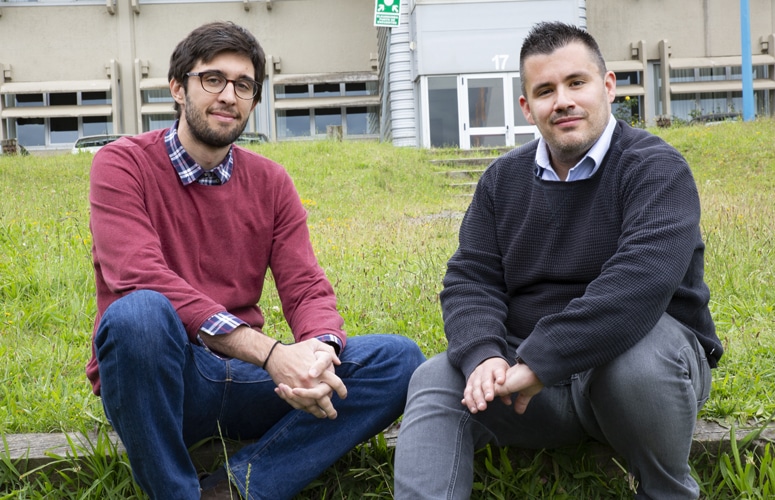Jun 20 2019
Mikel Sanz from the Physical Chemistry Department of UPV/EHU has led a theoretical team for an experiment reported in Nature Communications, a renowned journal.
 Mikel Sanz and Adrian Parra. (Image credit: Laura López, UPV/EHU)
Mikel Sanz and Adrian Parra. (Image credit: Laura López, UPV/EHU)
As part of the experiment, the researchers have managed to create a remote quantum state. In other words, for the first time, absolutely secure communication has been established with another, physically isolated quantum computer in the microwave regime. This innovative technology could revolutionize quantum computing in the years to come.
An experiment has been performed jointly with German and Japanese scientists within the greater European project of the Quantum Flagship, led by Mikel Sanz, researcher of the QUTIS Group of the UPV/EHU Physical Chemistry Department.
The scientists have managed to create a protocol for developing a remote quantum state while performing communication in the microwave regime, “which is the frequency at which all quantum computers operate. This is the first time the possibility of doing so in this range has been examined, which may bring about a revolution in the next few years in the field of secure quantum communication and quantum microwave radars,” stated Mikel Sanz, lead researcher of the project.
The creation of a remote quantum state (called remote state preparation) is dependent on the phenomenon of quantum entanglement, in which the individuality of sets of entangled particles is lost and the particles behave as single entities, even if they are spatially isolated.
Thus, if two computers share this quantum correlation, performing operations on only one of them can affect the other. Absolutely secure communication can be achieved.
Mikel Sanz, Lead Researcher, Physical Chemistry Department, UPV/EHU
Investigation on this protocol for preparing the remote quantum state started nearly two decades ago; however, until now, communication had always been performed over waves in the visible region.
“This is because work in this range can be done at room temperature, since the thermal radiation from bodies, through the mere fact of being at room temperature, is extremely low in the optic range, so that interferences barely exist in such communication,” explains Sanz. “However, in the microwave regime, billions, trillions of photons at room temperature are generated, which destroy quantum properties, so that to avoid all that interference, these experiments must be done at near-absolute zero temperatures (0.05 Kelvin), to limit the radiation from bodies to the maximum and make communication effective.”
Following significant studies on advancing this technology to carry out the experiments, the researchers managed to create a remote quantum state over a distance of 35 cm.
This has served as a concept test, also known as proof of principle, a first step towards knowing that it is possible to continue developing this technology. However, we believe this is a very important first step that can bring about a revolution over the next decade.
Mikel Sanz, Lead Researcher, Physical Chemistry Department, UPV/EHU
The researcher draws attention to two fields in which this revolution could occur: “on the one hand, quantum communication or cryptography, since this would be absolutely secure, and not having to change the frequency to the optic range (as it is done nowadays) would prevent many losses in this communication. And on the other hand, ultra-accurate quantum metrology and quantum radars.”
“The different radar applications are based on object detection, and this detection is done in microwave; and since there are devices like drones that are increasingly growing smaller, radars are required to have increasingly greater capacity for detecting them, in order to know where they are. The technology we are developing can help considerably in this regard.”
These and several other applications that can be achieved using this technology cannot be envisioned under temperatures as low as those in which it operates at present, so that “one of the project objectives is to attempt to make this technology work at room temperature. In the end, what we seek is to bring this technology to commercial products,” concluded Sanz.